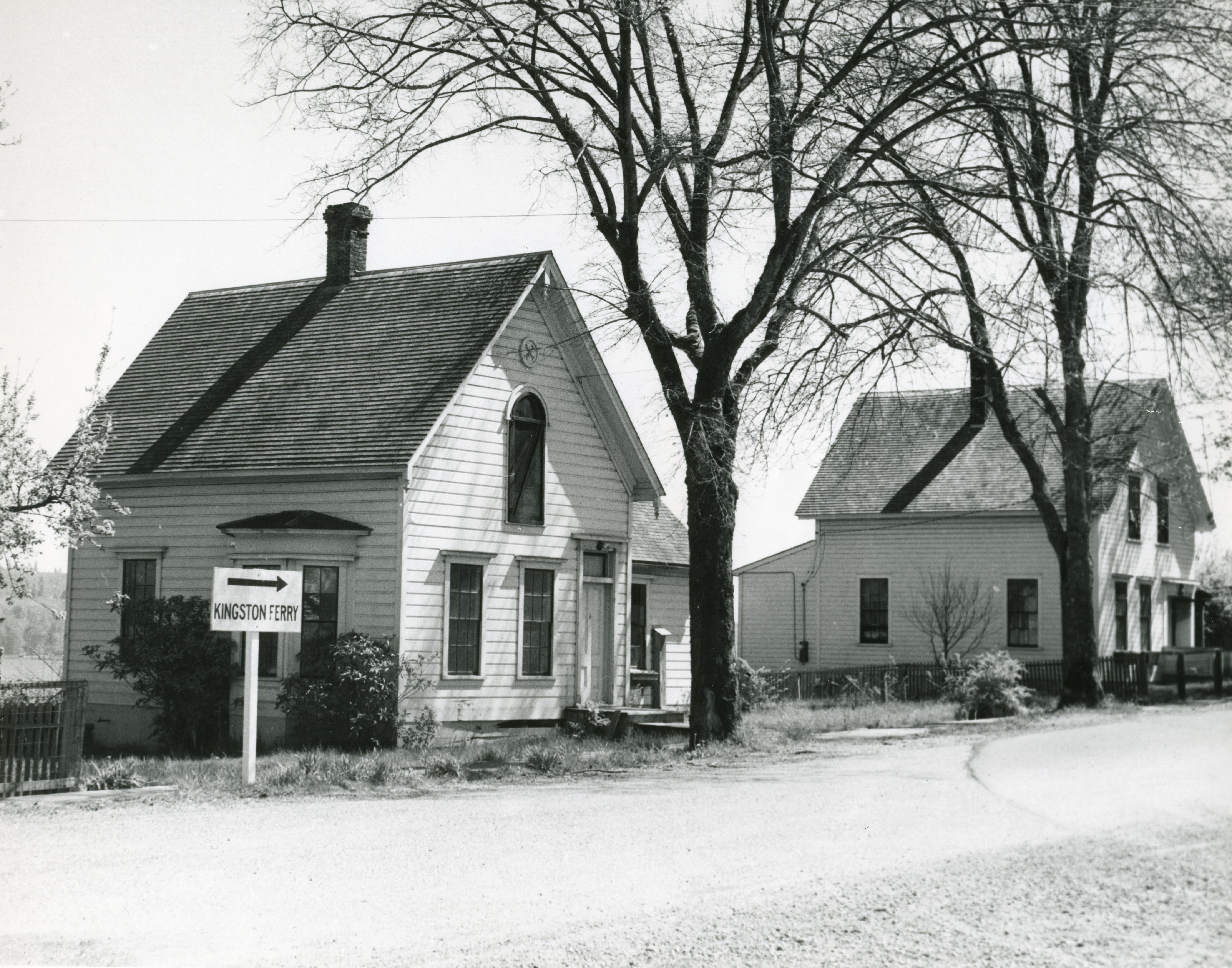COMMUNITIES SHAPED BY WATER: MILL TOWNS (no. 14)
Apr 14, 2011
- View of: 1959-72 view of mill houses at Port Gamble. The mill started in 1853 and operated through the 1990s. The mill town overlooking the former mill provides a wonderful sense of a working mill town. Source: Washington State Library Photograph Collection
 As towns grew, both the processing infrastructure as well as residential, social and related commercial structures developed to support the growing labor force. Changes in transportation by the late 1910s to 1920s often introduced rail spurs and loading facilities for barges. Some of these communities, such as Port Gamble, sustained this role into the 20th Century before ceasing. Most diversified with these subsequent functions replacing the processing related waterfront facilities. Much of the region’s earliest logging operations were located along the waterways, and in particular Grays Harbor. These communities, especially along the Hood Canal comprised some of the only Euro-American activities during the mid to late 1800s. Timber has come to shape the identity of the region as a whole and these marked the beginning of its extraction, especially in Grays Harbor. Stories tied to the processes and characters of this time provide an important regional heritage. Social movements coming out of the labor conditions and workers helped shape the region’s political identity. They provided employment for a range of immigrants and the foundation for subsequent communities. The processing facilities are closely linked with the built environment heritage of the Salish Sea. Most buildings constructed during the last nearly two centuries were built of timber that came from the region. In turn these same yards kept a furious pace during the world wars supplying aviation and naval building industry needs.
As towns grew, both the processing infrastructure as well as residential, social and related commercial structures developed to support the growing labor force. Changes in transportation by the late 1910s to 1920s often introduced rail spurs and loading facilities for barges. Some of these communities, such as Port Gamble, sustained this role into the 20th Century before ceasing. Most diversified with these subsequent functions replacing the processing related waterfront facilities. Much of the region’s earliest logging operations were located along the waterways, and in particular Grays Harbor. These communities, especially along the Hood Canal comprised some of the only Euro-American activities during the mid to late 1800s. Timber has come to shape the identity of the region as a whole and these marked the beginning of its extraction, especially in Grays Harbor. Stories tied to the processes and characters of this time provide an important regional heritage. Social movements coming out of the labor conditions and workers helped shape the region’s political identity. They provided employment for a range of immigrants and the foundation for subsequent communities. The processing facilities are closely linked with the built environment heritage of the Salish Sea. Most buildings constructed during the last nearly two centuries were built of timber that came from the region. In turn these same yards kept a furious pace during the world wars supplying aviation and naval building industry needs. 
[1] (Andersen 1960) p. 30





